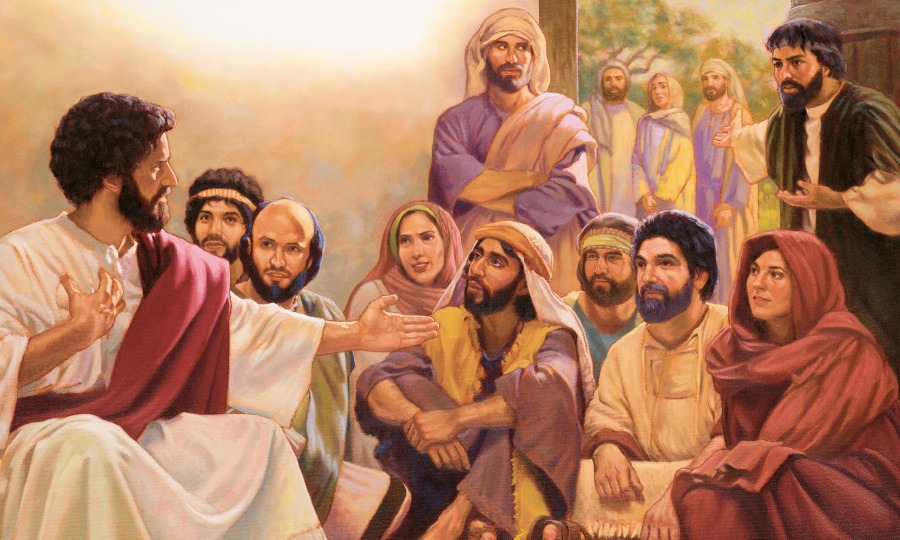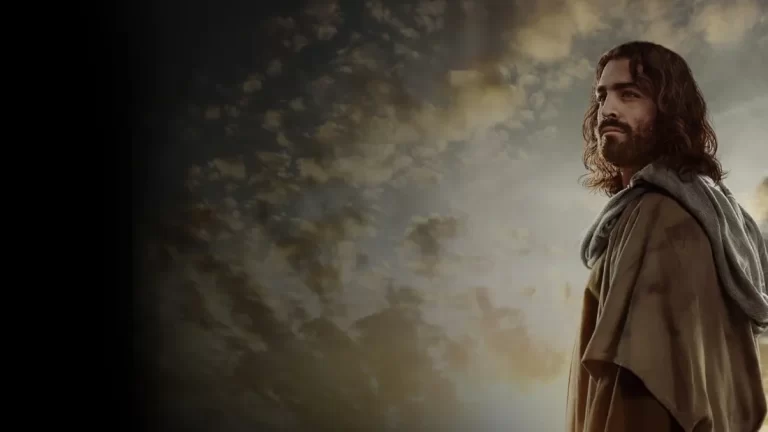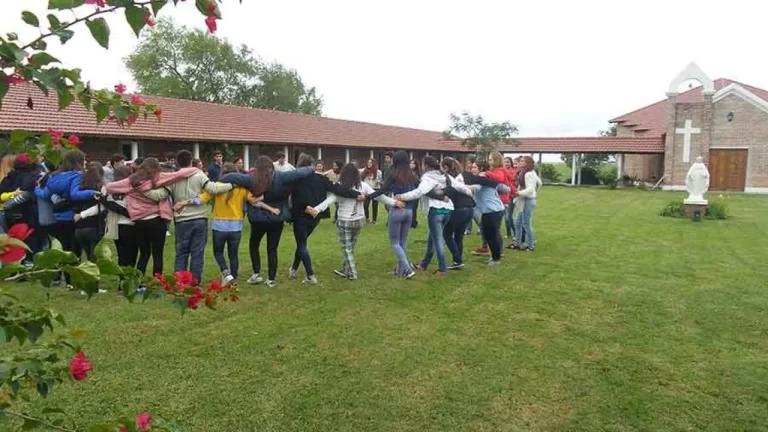Surprise yourself with the story of Jesus, a life of love and dedication
Jesus of Nazareth, also called Jesus Christ, is the central figure of Christianity and one of the most compelling in Western culture. He knows more about the Story of Jesus in the following Post.
The Story of Jesus
Practically all specialists in the history of Antiquity insist that Jesus of Nazareth was a Jewish evangelist who lived at the beginning of the main century in the towns of Galilee and Judea, and was executed in Jerusalem around the year 30, under the standard of Pontius Pilate. .
For most Christian categories, he is the Son of God and, by extension, the manifestation of God himself. His importance also lies in the conviction that, with his demise and his consequent revival, he reclaimed humanity. (See Article: The Bible )
Judaism denies its heavenly nature, as it is contradictory to its origin from God. In Islam, where he is known as Isa, he is considered one of the most important prophets, despite the fact that they also deny his eternity.
What is thought about Jesus comes solely from Christian convention despite the fact that it is referred to in non-Christian sources, particularly those used for the creation of the short, composite stories, as most sentiment indicates. , in any case thirty or forty years after his death.
Most researchers think that when considering the accounts, it is possible to recreate conventions that go back to Jesus’ counterparts, despite the fact that there are extraordinary inconsistencies among analysts regarding strategies for investigating the writings and the ends that can be derived from them.
Jesus in the New Testament
What is sought is an account of the life of Jesus as it appears in the four accounts incorporated into the New Testament, thought of in the holy books by every Christian admission.
The disclosure record is the main access point for information on Jesus, and comprises the premise of the translations that the various parts of Christianity make of his figure.
Although it may contain verifiable components, on a very basic level it communicates the trust of the group of Christian people when these writings were composed, and the vision they had of Jesus of Nazareth.
Birth and adolescence
The stories about the birth and youth of Jesus come only from the Gospel of Matthew and Luke. There are no such stories in the Gospels of Mark and John. The stories of Matthew and Luke vary from each other:
The Gospel of Matthew does not recount any excursions prior to the introduction of Jesus, so it could be expected that Mary and her partner Joseph lived in Bethlehem. (See Article: New Testament )
Mary turned out to be pregnant out of nowhere and Joseph prepared to give her up, but a holy messenger reported in his fantasies that Mary’s pregnancy was created by the Holy Spirit and foretold, in the expressions of the prophet Isaiah, that their child would be the Messiah that the Jews anticipate.
A few artists from the Orient around touched base in Jerusalem to gain information about the “recently conceived ruler of the Jews” in order to venerate him, which alerts the King of Judea, Herod the Great, who chooses part of the deal. . The artists, guided by a star, land in Bethlehem and love the child.
Once again the heavenly attendant visited Joseph and warned him of Herod’s impending mistreatment, so the family escaped to Egypt, remaining there until the ruler’s demise (again told Joseph by the blessed messenger, who appeared in this line for The Third Time: Joseph returned and settled with his family in Nazareth in Galilee.
In the Gospel of Luke, Mary and Joseph are said to live in the Galilean city of Nazareth. The narrative of the origin of Jesus is here intertwined with that of John the Baptist, since in this gospel Mary and Elizabeth, mother of the Baptist, are relatives and the holy messenger Gabriel advises Mary to introduce him to Mary.
Chief Augustus at that point organizes an enumeration where each one must enlist in their place of birth, and José must make a trip to Bethlehem, for being initially from this place.
Jesus is conceived in Bethlehem as they travel and is loved by the ministers. Luke also includes brief anecdotes about the circumcision of Jesus, his introduction into the Temple, and his experience with the specialists at the Temple in Jerusalem, on a tour of the Passover event, when he was twelve years old.
In the Gospels of Matthew and Luke there are two ancestors of Jesus. Matthew returns to the Patriarch Abraham, and Luke to Adam, the main man as indicated in Genesis.
These two family histories are indistinguishable between Abraham and David, however, they vary from the last mentioned, since that of Matthew makes Jesus a relative of Solomon, while, as Luke indicates, his genealogy would originate in Natam, another of the sons of David.
In both cases, what is indicated is the inheritance of Joseph, although, as the stories of young people indicate, this would have been the supportive father of Jesus.
Baptism and temptations
The landing of Jesus was predicted by John the Baptist (his cousin, according to the Gospel of Luke), by whom Jesus was purified through water in the Jordan River. During the immersion, the Spirit of God, like a bird, glided over Jesus, and the voice of God was heard.
As the brief accounts indicate, the Spirit led Jesus into the desert, where he fasted for forty days and defeated the impulses to which he was oppressed by the Devil.
This scene is not referenced in the Gospel of John. After Jesus walked to Galilee, he settled in Capernaum and began lecturing on the landing of the Kingdom of God.
open life
Along with his devotees, Jesus visited the districts of Galilee and Judea giving lectures on the gospel and performing various wonders. The request for certainties and idioms of Jesus changes as indicated by the various gospel accounts.
The extent to which Jesus’ open existence continued is also not shown, despite the fact that the Gospel of John makes reference to Jesus praising the annual Passover (Pesach) gala in Jerusalem several times. Rather, the short stories only note the Passover occasion on which Jesus was executed.
A large part of the certainties of the open existence of Jesus described in the stories, have as a location the northern area of Galilee, near the Sea of Tiberias, or Lake Genesaret, particularly the city of Capernaum, and also others, for example, Chorazin or Bethsaida.
He also visited, in the south of the area, cities, for example, Cana or Nain, and the city where he had grown up, Nazareth, where his previous neighbors gave him a threatening environment.
His proclamation also reached Judea (according to the Gospel of John, he visited Jerusalem several times from the beginning of his open life), and he was in Jericho and Bethany (where he raised Lazarus).
He chose his main devotees (he brought the accounts of “messengers”; in Greek, “he sent”), twelve in number, from among the individuals of Galilee. The attached summary is mentioned in the synoptics: Simon, called Peter and his brother Andrew; Santiago de Zebedeo and his brother Juan; Philip and Bartholomew;
Thomas and Matthew the publican; Santiago the one of Alfeo and Tadeo; Simon the Zealot and Judas Iscariot, who could then sell Jesus. Some of them were fishermen, similar to the two sets of brothers framed separately by Pedro and Andrés, and Juan and Santiago.
Matthew is generally related to Levi, the one from Alphaeus, a tax collector who is quickly described in the three synoptics as he was called by Jesus, who brought to Jesus several censures from the Pharisees.
The Gospel of John only refers to the names of nine of the messengers, although in some entries it alludes to the number of twelve.
He gave lectures both in synagogues and abroad, and groups gathered to listen to his words. Among his speeches, the alleged Sermon on the Mount is found in the Gospel of Matthew. He often used illustrations to reveal the Kingdom of God to his followers.
The anecdotes of Jesus are short stories whose substance is unclear (Jesus regularly has to clarify them later). For the most part, they have a scatological substance and only appear in the short stories.
Among the best known are the illustration of the sower, whose meaning Jesus immediately clarifies; that of the seed that develops; the one with the mustard seed, the one with the wheat and the tares, the one with the lost sheep and the one with the lost coin, the one with the wild hireling, the one with the workers sent to the vineyard, the one with the two children, the one with the vineyards dangerous; the one of the visitors of the wedding, the one of the ten virgins, the one of the gifts, the one of the last judgment.
Two of the best known appear only in the Gospel of Luke: it is the illustration of the great Samaritan and that of the extravagant child. In the stories, Jesus often uses images identified with the life of the worker.
He had conversations with people from the most important religious groups in Judaism, and particularly with the Pharisees, whom he blamed for their bad faith and for not thinking about the most significant things in the Torah: fairness, sympathy and fidelity.
The inventiveness of his message lies in the emphasis on affection for enemies as well as his welcoming association with God whom he brought in Aramaic with the recognizable articulation Abba (Father) that neither Mark nor Paul interprets.
He is a close God who seeks out the underestimated, persecuted and scoundrels to offer them his indulgence. Our Father’s plea, which he suggested his followers use, is a reasonable articulation of this welcoming association with God referred to above.
The Rebirth of Lazarus by Giotto di Bondone
As the accounts indicate, during his service Jesus played out some supernatural events. Altogether twenty-seven supernatural events are described in the four authorized accounts, of which fourteen are fixes of various diseases, five expulsions, three revivals, two miracles of the common type, and three phenomenal signs.
Transfiguration
The short stories report that Jesus went up a mountain to inquire with a portion of the messengers, and when he inquired, the presence of his face changed, and his dress ended up white and shining. Moses and Elijah appeared next to him. Meanwhile, the witnesses dozed off, but after waking up they saw Jesus with Moses and Elijah.
Dwindle proposed that they make three tents: for Jesus, Moses, and Elijah. At that moment a cloud appeared and a radiant voice was heard saying: “This is my chosen Son, listen to him.” The followers did not determine what they had seen.
In Bethany, near Jerusalem, he was blessed with aromas by a woman. According to the synoptics, on Easter night he feasted in Jerusalem with the Apostles, in what Christian convention assigns as the Last Supper. During this Passover meal, Jesus anticipated that he would be sold by one of the apostles, Judas Iscariot.
He took bread in his hands, saying “Take and eat, this is my body” and after that, taking a cup of wine, he said: “Drink all, in light of the fact that this is the blood of the Covenant, which will be thrown by the great quantity for the reduction of sins.” Furthermore, he foretold, according to the Synoptics, that he would not drink wine again until he drank it again in the Kingdom of God.
Arrest
After dinner, according to the Synoptics, Jesus and his supporters went to ask questions in the Garden of Gethsemane. The messengers, instead of imploring, withdrew, and Jesus endured a flash of solid anguish regarding his fate, even though he chose to comply with God’s will.
Judas had suitably tricked Jesus, to pass him on to the rulers of the clerics and elders of Jerusalem in exchange for thirty pieces of silver. Accompanied by a gathering furnished with swords and clubs, sent by the rulers of ministers and seniors to whom he came. Gethsemane revealed the character of Jesus by kissing his cheek.
Jesus was captured. With regard to his adherents there was an attempt at obstruction, but in the end they all dispersed and fled.
Judgment
After his capture, Jesus was taken to the royal residence of the consecrated minister Caiaphas. There they tried it before the Sanhedrin. False witnesses came forward, but since his statements were not coordinated, they were not acknowledged. Finally, Caiaphas asked directly if he was the Messiah, and Jesus said, “There is no doubt about it.”
The esteemed cleric tore his garments at what he thought of obscenity. The individuals of the Sanhedrin mercilessly ridiculed Jesus. In the Gospel of John, Jesus was brought before the eyes of Annas, father-in-law of Caiaphas, and after that, before the last mentioned.
Only the interrogation before Annas is point by point, not very similar to the one that appeared in the synoptics. Peter, who had persecuted Jesus undercover after his capture, was hiding among the esteemed clergyman’s workers. Perceived as devoted to Jesus by the hirelings, he denied him several times (twice according to the Gospel of John), as Jesus had prophesied.
The next morning, Jesus was brought before Pontius Pilate, the Roman procurator Note 9. After addressing him, Pilate found him not guilty and requested that the group choose between freeing Jesus or a desperate acquaintance named Barabbas.
The group, influenced by the sovereign ministers, called for Barabbas to be discharged and for Jesus to be killed. Pilate emblematically washed his hands to express his honesty about Jesus’ death.
Crucifixion
Jesus was flogged, dressed in a red robe, put a crown of thistles on his head and a stick in the right hand. The Roman soldiers ridiculed him saying, “Well-being, king of the Jews.”
He had to transport the cross where he was going to be killed to a place called Golgotha, which in Aramaic means “place of the skull”. A man named Simon of Cyrene helped him carry the cross.
They gave Jesus nervously to drink wine. He tried it but he had no desire to take it. After the execution, the fighters distributed their clothing. On the cross above his head, they put a notice in Aramaic, Greek and Latin with the thought process of his prayer:
“This is Jesus, Lord of the Jews,” which is regularly condensed in INRI compositions (Iesus Nazarenus Rex Iudaeorum, truly ‘Jesus of Nazareth, Ruler of the Jews’). He was executed between two cheats.
Around three in the afternoon, Jesus shouted: “Eli, Eli, lema sabactani”, which, according to the Gospel of Matthew and the Gospel of Mark, in Aramaic means: ‘My God, my God, why have you neglected? me? ‘.
The last expressions of Jesus vary in the other two gospels. Furthermore, there is a contrast between the accounts of Jesus’ supporters available at his execution: in Matthew and Mark, they are some of Jesus’s devotees; In the Gospel of John, reference is also made to the mother of Jesus and to the “student whom he appreciated” (according to Christian custom, this would be the messenger John, although his name is not mentioned in the content of the Gospel). ).
Grave
An adherent of Jesus, named Joseph of Arimathea, was approached by Pilate by Jesus’ party on a Friday night similar to the one who had kicked the bucket, and stored it, wrapped in a sheet, in a tomb cut into the stone. He secured the catacomb with a huge stone.
According to the Gospel of Matthew (not mentioned in different accounts), the next day, the “sovereigns of the ministers and the Pharisees” requested that Pilate place an equipped gatekeeper before the mausoleum, to prevent the followers of Jesus from taking his body and spreading the gossip that had risen. Pilate agreed.
rebirth and ascension
All four accounts report that Jesus came back to life on the third day after his death and appeared to his students on a few occasions. In each of them, the first to find the restoration of Jesus is Mary Magdalene. Two of the accounts (Mark and Luke) also relate his ascent to paradise. The anecdotes about the risen Jesus change, in any case, as the accounts indicate:
In the Gospel of Matthew, Mary Magdalene and “the other Mary” went to the tomb on Sunday morning. A seismic tremor followed, and a blessed messenger dressed in white scooped the stone out of the tomb and sat on it. The guards, who saw the scene, trembled with fear and “remained dead.
The holy messenger informed the ladies of Jesus’ revival and taught them to advise the students to go to Galilee, where they could see him. After returning, Jesus himself met them and recommended that they advise the devotees to go to Galilee.
Meanwhile, the guardians warned the rulers of the ministers of what had happened. They were paid to spread the possibility that Jesus’ body had been taken by devotees. The eleven missionaries went to Galilee, and Jesus sent them to give the gospel.
In the Gospel of Mark, three adherents of Jesus, Mary Magdalene, Mary of James and Salome, went to the tomb on Sunday, all around quickly towards the beginning of the day, with the aim of blessing Jesus with aromas.
They saw that the stone that secured the tomb was removed. Inside the tomb, they found a young man in a white robe, who declared that Jesus had risen, and asked them to advise the students and Peter to go to Galilee to see Jesus there.
It is shown that Maria and her companions did not say anything to anyone, as they were worried. Then, it is said that Jesus appeared to Mary Magdalene (also different women), and that she gave the rest of Jesus’ followers the uplifting news, but it was not accepted.
Jesus appeared once again, this opportunity to two who were heading: when these supporters told the story, they were not accepted either. At last, he appeared to the eleven messengers, whom he rebuked for not having faith in his revival. He educated them to give a gospel lecture and went up to paradise, where he sits on the right side of God.
In the Gospel of Luke, some ladies, Mary Magdalene, Joan and Mary of James, and others whose names are not mentioned, went to the tomb to bless Jesus with scents. They found the evacuated tombstone, entered and did not discover the body.
At that moment, two men appeared in impressive clothing, who reported the revival of Jesus. The ladies reported the revival to the witnesses, but they did not trust them, apart from Peter, who went to the tomb and found that the body had missing.
On that equivalent day, Jesus appeared to two students on their way from Jerusalem to Emmaus, who remembered him at mealtime. Not long after he presented himself to the eleven, who accepted that he was a soul, however, he showed them that they were brittle living creatures and bones, and they ate at his essence. He clarified the importance of their demise and revival and then took them near Bethany, where he rose to paradise.
In the Gospel of John, Mary Magdalene rushed to the tomb in all respects in the early part of the day and found that the stone had been rolled away. She kept running looking for Peter and the “follower whom Jesus adored” to warn them. The two ran to the grave. The beloved supporter started things off, however, he did not enter the grave. Dwindle went in first and saw the supports and deck, but not the body.

Hello! Let me enthusiastically introduce myself as a dedicated blogger fueled by an intense passion for meticulously crafting insightful and well-researched blogs. My mission revolves around providing you, dear readers, with a veritable treasure trove of invaluable information.






